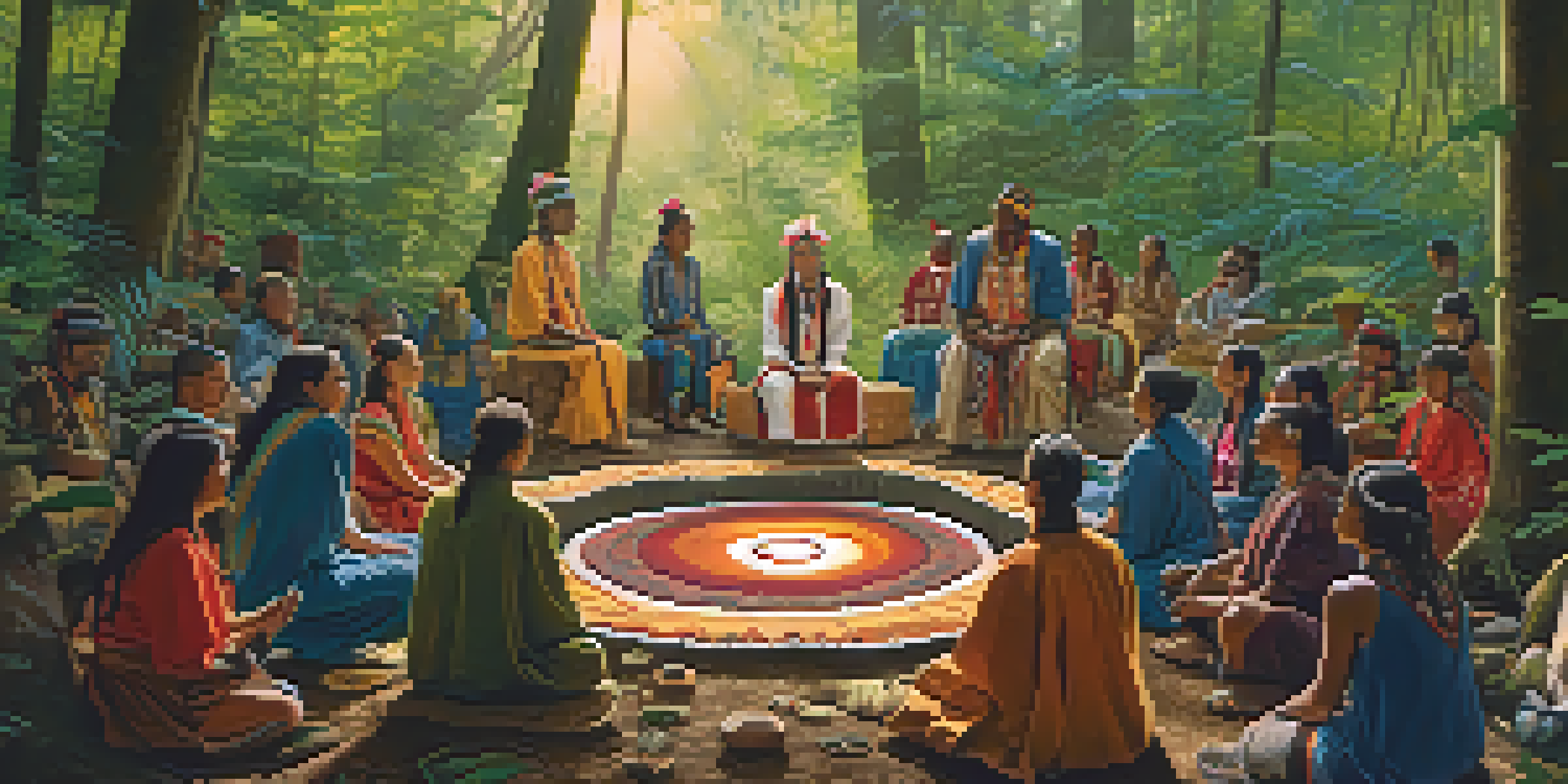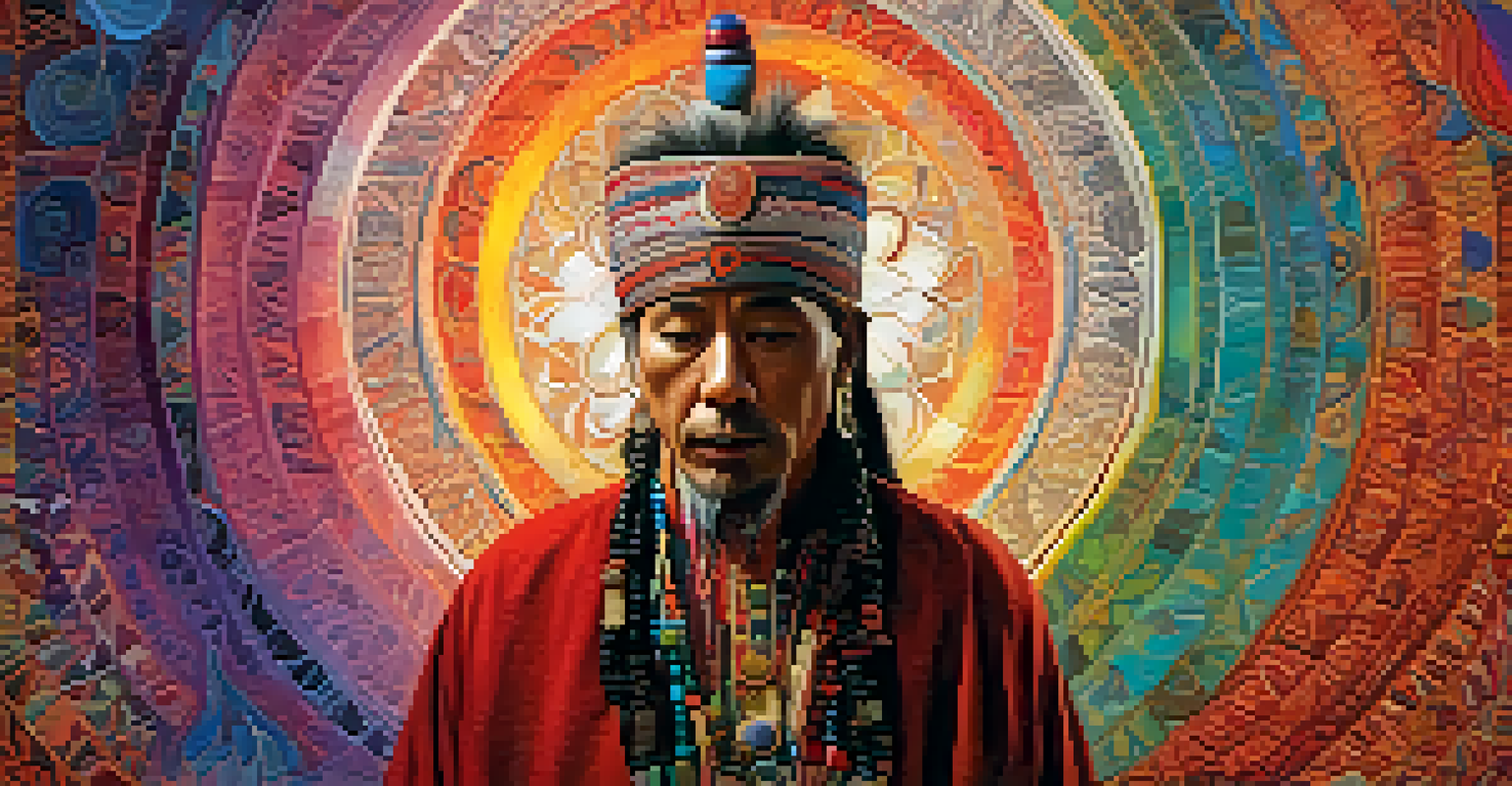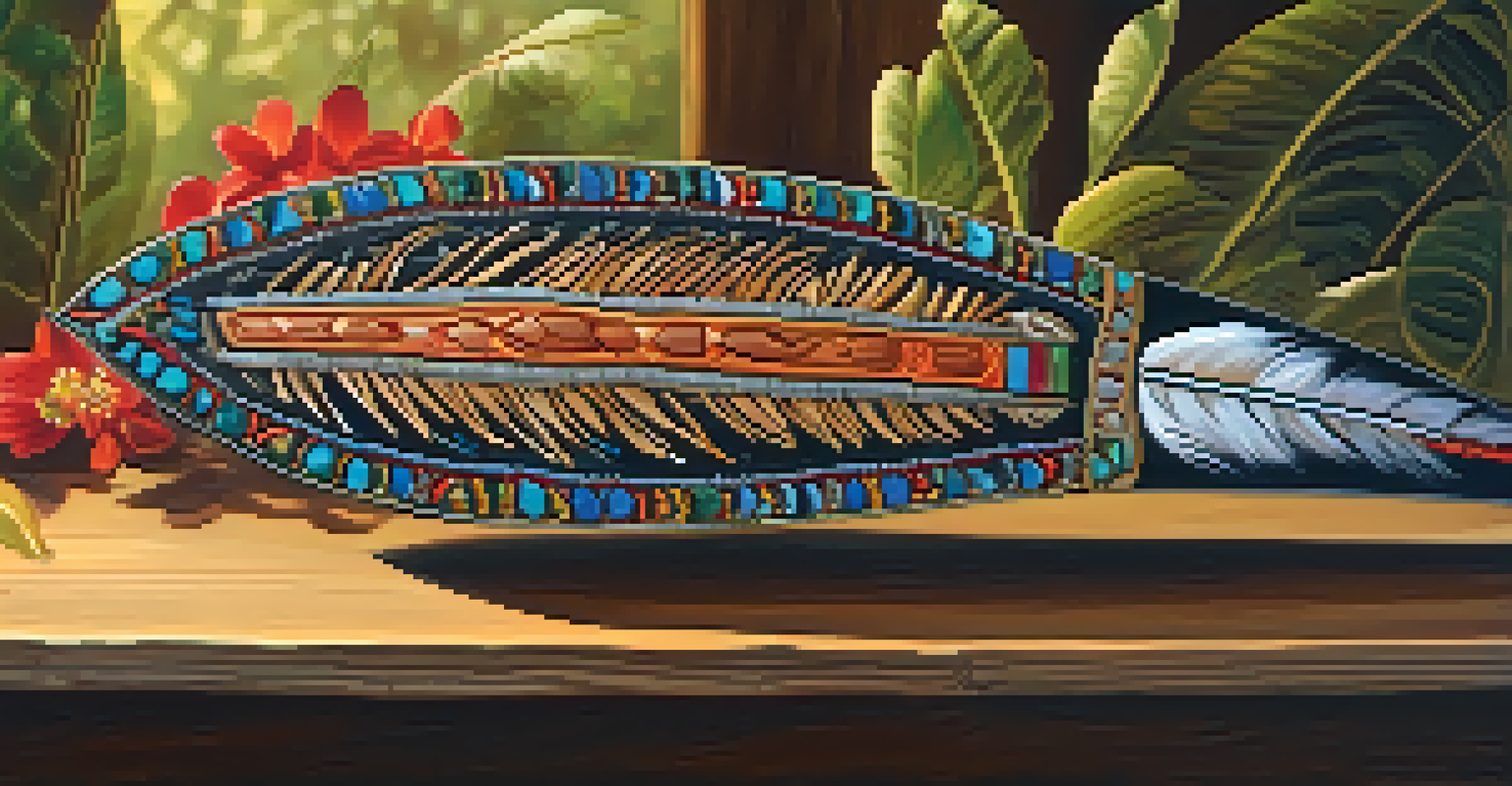The Role of Shamans in Indigenous Entheogen Practices

Understanding Entheogens and Their Cultural Context
Entheogens are substances that are used in a spiritual or religious context to facilitate profound experiences. These can include plants like peyote, psilocybin mushrooms, and ayahuasca, which have been utilized by various indigenous cultures for centuries. The use of entheogens is often tied to traditional beliefs and practices that connect individuals with the spiritual realm.
The use of entheogens is often tied to traditional beliefs and practices that connect individuals with the spiritual realm.
In many indigenous cultures, these substances are not merely tools for recreation; rather, they are seen as sacred gifts from nature. Their use is often guided by rituals that help participants navigate their experiences, ensuring that they engage with the spiritual world safely and meaningfully. This highlights the cultural significance of entheogens beyond their psychoactive effects.
Understanding the cultural context of entheogens is crucial, as it shapes how they are perceived and used. Shamans, as spiritual leaders, play a pivotal role in this dynamic, guiding individuals through their experiences and helping them integrate insights gained during these journeys.
Shamans: The Spiritual Guides of Indigenous Cultures
Shamans are often regarded as intermediaries between the physical and spiritual worlds. They possess unique knowledge and skills that enable them to navigate these realms, acting as healers, counselors, and spiritual leaders. In many indigenous communities, shamans are deeply respected figures, entrusted with the responsibility of guiding others through transformative experiences.

Their training often involves extensive apprenticeship, where they learn not only about the entheogens themselves but also the associated rituals, songs, and prayers that enhance the experience. This comprehensive understanding allows shamans to tailor their guidance to the needs of individuals, ensuring that each journey is unique and impactful.
Entheogens in Cultural Context
Entheogens are sacred substances used in spiritual rituals, connecting individuals with the spiritual realm through culturally significant practices.
Moreover, shamans often emphasize the importance of intention when using entheogens. They help participants set clear intentions before consumption, fostering a mindset that can lead to deeper insights and healing. This approach underscores the holistic nature of shamanic practices, where mental, emotional, and spiritual well-being are interconnected.
Rituals and Practices Surrounding Entheogen Use
Rituals play a vital role in the process of using entheogens, as they create a sacred space for participants. These rituals can vary widely among different cultures but often include elements like music, chanting, and specific ceremonial practices. Such activities not only prepare the participants but also help to invoke the presence of spiritual guides.
Healing is seen as a collective effort, where the entire community plays a role in the individual's journey towards wellness.
During these ceremonies, the shaman often acts as a conductor, guiding the energy of the group and ensuring that everyone feels safe and supported. The communal aspect of these rituals fosters a sense of belonging and shared experience, which can deepen the impact of the journey. Participants often report feeling a strong connection to each other and the natural world during these sessions.
Additionally, rituals often include a period of integration after the entheogen experience. This phase is crucial, as it allows participants to reflect on their journeys and make sense of the insights gained. Shamans may provide additional guidance during this time, helping individuals articulate their experiences and apply any lessons learned to their daily lives.
Healing Traditions: The Shaman's Role in Wellness
In many indigenous cultures, shamans are not only spiritual guides but also healers. They use entheogens as tools to help individuals address physical and psychological ailments. This holistic approach to healing recognizes that emotional and spiritual health are just as important as physical well-being.
Shamans often conduct healing ceremonies that incorporate entheogens to facilitate deep emotional release or insight into one's health issues. Participants may uncover underlying traumas or blockages that contribute to their ailments, enabling them to work through these challenges in a supportive environment. This process can lead to profound transformations in their overall quality of life.
Shamans as Spiritual Guides
Shamans serve as respected intermediaries who guide individuals through transformative experiences, emphasizing intention and holistic healing.
Moreover, the shamanic healing tradition emphasizes the importance of community support. Healing is seen as a collective effort, where the entire community plays a role in the individual's journey towards wellness. This interconnectedness fosters a sense of responsibility and care among community members, reinforcing the idea that healing is a shared path.
Contemporary Perspectives on Shamanism and Entheogens
As interest in entheogens grows in modern society, so does the exploration of shamanic practices. Many individuals are seeking authentic experiences that connect them to ancient wisdom and spiritual traditions. This has led to a resurgence of interest in shamanism, often blending traditional practices with contemporary approaches to wellness.
However, this trend also raises ethical concerns regarding cultural appropriation and the commodification of sacred practices. It's essential to approach these traditions with respect and understanding, recognizing the deep cultural roots from which they arise. Engaging with indigenous communities and learning from them is crucial for fostering genuine connections.
Contemporary perspectives also emphasize the importance of integration and aftercare following entheogen experiences. People are increasingly recognizing that the insights gained during these journeys require thoughtful processing and support. This shift highlights the need for a balanced approach that honors both the ancient practices of shamans and the evolving understanding of mental health and wellness.
Challenges Facing Indigenous Shamans Today
Despite the growing interest in shamanism, indigenous shamans face numerous challenges in today's society. The commercialization of entheogenic experiences often strips away the cultural significance and context that are vital to these practices. This commodification can undermine the sacredness of rituals, reducing them to mere entertainment.
Additionally, many indigenous communities are grappling with the effects of colonialism, environmental degradation, and loss of traditional knowledge. These factors can hinder the ability of shamans to carry out their roles effectively, as they navigate a landscape that is increasingly disconnected from their cultural roots. The preservation of traditional practices is crucial for maintaining the integrity of shamanic roles.
Challenges for Indigenous Shamans
Indigenous shamans face challenges such as cultural appropriation and the impact of colonialism, which threaten the integrity of their traditional practices.
Furthermore, shamans often face scrutiny from both scientific communities and the mainstream public. While some embrace the intersection of traditional knowledge and modern science, others may struggle to gain recognition and legitimacy for their practices. Balancing these perspectives is essential for fostering mutual respect and understanding.
The Future of Shamanism and Entheogen Practices
The future of shamanism and entheogen practices holds both promise and challenges. As awareness of the therapeutic potential of entheogens grows, there is an opportunity for greater collaboration between indigenous shamans and contemporary wellness practitioners. This synergy can enrich the understanding of both traditional and modern healing approaches.
Moreover, there is a rising interest among younger generations in reconnecting with ancient practices, which could lead to a revival of shamanic traditions. This rekindling of interest may encourage more individuals to seek authentic experiences that honor the cultural roots of these practices. However, it is vital to approach this revival with respect and a commitment to ethical engagement.

Ultimately, the future of shamanism and entheogen practices will depend on the ability to navigate the complexities of cultural preservation, ethical integration, and mutual respect. By fostering open dialogue and collaboration, there is potential for a richer understanding of the invaluable role of shamans in guiding individuals on their spiritual journeys.